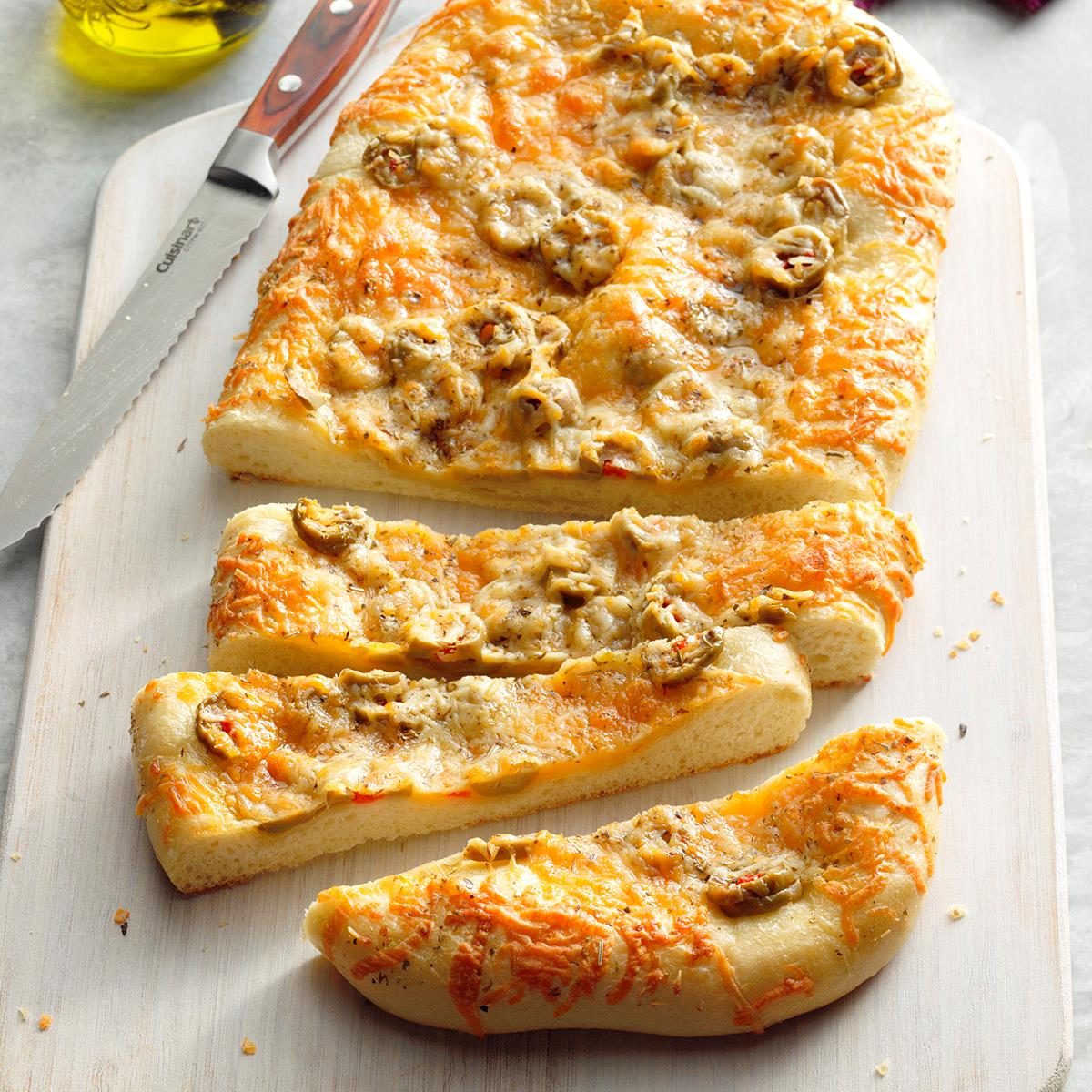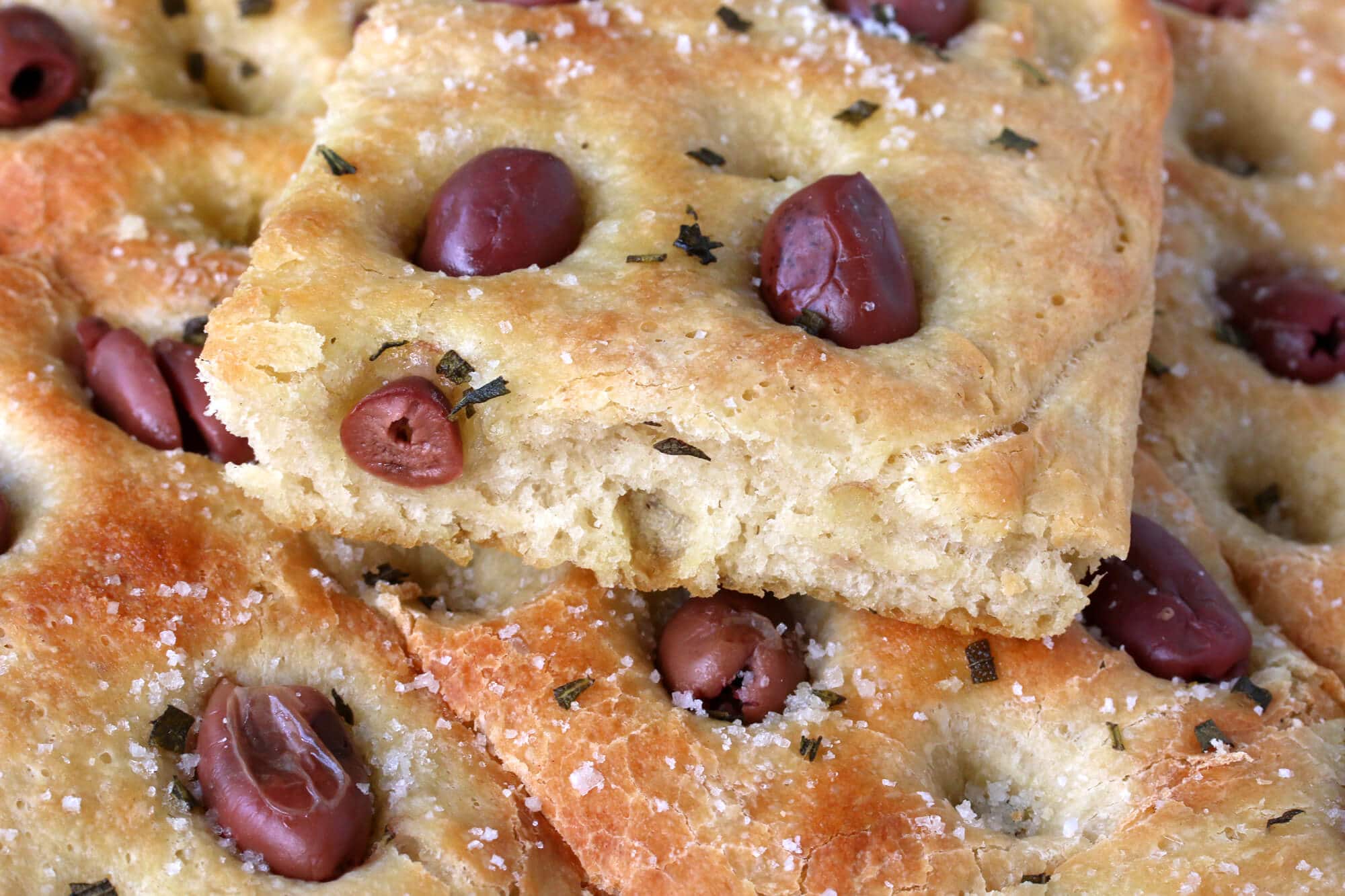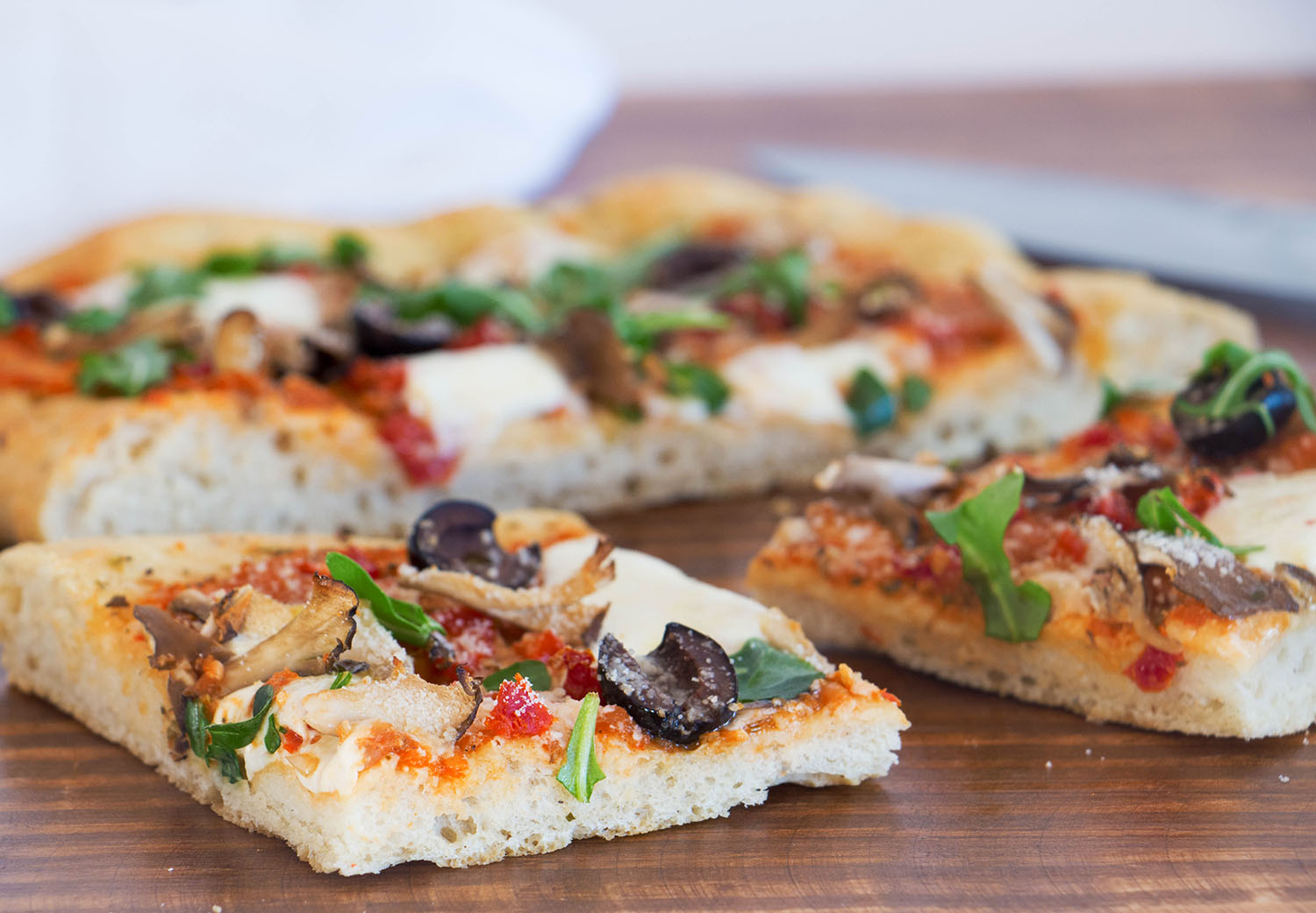Focaccia History and Origins

Focaccia, a beloved flatbread, boasts a rich history that spans centuries and continents. Its origins can be traced back to ancient times, evolving over the years to become the culinary staple it is today. From its humble beginnings to its modern-day variations, focaccia’s journey is a testament to the enduring appeal of simple yet delicious food.
Ancient Origins and Evolution
Focaccia’s roots lie in ancient Roman cuisine. The Romans, known for their love of bread, created a flatbread called “panis focacius,” which was essentially a simple, unleavened bread baked in a wood-fired oven. This bread served as a base for various toppings, including herbs, olive oil, and salt.
Over time, the recipe evolved, incorporating yeast and incorporating ingredients like cheese and vegetables.
Cultural Significance in Different Regions
Focaccia holds a special place in the culinary traditions of various regions. In Italy, where it originated, focaccia is a beloved street food and a staple at family gatherings. Each region has its own unique variations, showcasing local ingredients and flavors.
For instance, in Liguria, focaccia is often topped with rosemary and olive oil, while in Tuscany, it’s frequently served with cheese and onions.
Interesting Anecdotes and Stories
Focaccia’s history is intertwined with fascinating stories and anecdotes. One such tale recounts the origins of the iconic “focaccia with holes.” Legend has it that a baker in Genoa accidentally dropped a piece of focaccia onto a hot stove, creating the characteristic dimples.
This accidental innovation became a beloved feature of the bread, adding to its charm and texture.
Focaccia Ingredients and Variations
Focaccia is a versatile bread that offers endless possibilities for customization. The foundation of a classic focaccia lies in a simple dough, but the real magic happens when you start adding your own personal touches.
Essential Ingredients for Basic Focaccia
The core ingredients for a basic focaccia recipe are:* Flour:Bread flour, with its higher protein content, provides the structure and chewiness that focaccia is known for.
Water
The water activates the yeast and hydrates the flour, creating a soft and pliable dough.
Yeast
Active dry yeast or instant yeast is used as the leavening agent, causing the dough to rise.
Salt
Salt enhances the flavor of the bread and helps to control the yeast activity.
Olive Oil
Olive oil adds richness and moisture to the dough, resulting in a tender and flavorful crust.
Common Variations and Additions
Focaccia is a canvas for culinary creativity, allowing you to incorporate a wide range of flavors and textures.
- Herbs:Fresh or dried herbs, like rosemary, thyme, oregano, and basil, are classic additions to focaccia. They impart a fragrant and savory aroma.
- Cheese:Shredded cheeses, such as mozzarella, parmesan, or goat cheese, add a salty and melty element to the bread.
- Vegetables:Sliced or chopped vegetables, like onions, garlic, tomatoes, or peppers, provide a burst of color and flavor.
- Other Additions:You can also experiment with other ingredients like olives, sun-dried tomatoes, roasted peppers, or even chopped nuts.
Focaccia Recipe Variations
The following table highlights some popular focaccia variations, showcasing their unique ingredients and flavor profiles:
| Recipe Name | Unique Ingredients | Flavor Profile | Description |
|---|---|---|---|
| Classic Focaccia | Rosemary, sea salt | Herbaceous, savory, slightly salty | A simple and classic focaccia with the perfect balance of flavors. |
| Tomato and Basil Focaccia | Sliced tomatoes, fresh basil, garlic | Bright, tangy, herbaceous | A vibrant and flavorful focaccia reminiscent of a Caprese salad. |
| Olive and Herb Focaccia | Black olives, rosemary, oregano, thyme | Savory, salty, earthy | A hearty and satisfying focaccia with a robust flavor profile. |
| Potato and Rosemary Focaccia | Thinly sliced potatoes, rosemary, garlic | Earthy, savory, slightly sweet | A comforting and rustic focaccia with a delightful blend of flavors. |
Focaccia Recipe Kits
Focaccia recipe kits have become increasingly popular in recent years, offering a convenient way to enjoy this delicious Italian bread. These kits typically contain pre-measured ingredients, including flour, yeast, salt, and sometimes herbs or other flavorings, along with instructions for making focaccia at home.
This simplifies the process, making it accessible even for novice bakers.
Focaccia Recipe Kits Comparison
Focaccia recipe kits vary in their ingredients, complexity, and overall quality. To make an informed decision, it’s helpful to compare and contrast the options available.
- Ingredient Quality:Some kits utilize premium ingredients, like organic flour or extra virgin olive oil, resulting in a more flavorful and authentic focaccia. Others might opt for less expensive alternatives, impacting the final taste and texture.
- Recipe Complexity:Kits can range from basic, requiring only a few steps, to more elaborate ones that involve multiple stages like proofing and shaping. Consider your baking experience and available time when choosing a kit.
- Flavor Variations:Focaccia kits often come in different flavors, such as rosemary, garlic, or even sweet variations. This variety allows you to explore different taste profiles and personalize your focaccia experience.
Pros and Cons of Using a Recipe Kit
Focaccia recipe kits present both advantages and disadvantages that are worth considering.
- Pros:
- Convenience:Recipe kits eliminate the need to source and measure individual ingredients, saving time and effort.
- Consistency:Pre-measured ingredients ensure a more consistent outcome, reducing the risk of errors or variations in taste.
- Accessibility:Kits make focaccia baking accessible to those with limited baking experience, providing a straightforward and achievable recipe.
- Cons:
- Limited Customization:Recipe kits often provide a specific recipe, limiting the ability to adjust ingredients or experiment with different flavors.
- Cost:Recipe kits can be more expensive than purchasing individual ingredients, especially if you are a frequent baker.
- Potential for Lower Quality:Some kits might use less premium ingredients to keep costs down, impacting the overall taste and texture of the focaccia.
Focaccia Recipe Kit Brands
Several brands offer focaccia recipe kits, each with its own strengths and weaknesses.
- Brand A:This brand is known for its high-quality ingredients, including organic flour and extra virgin olive oil. Their kits are slightly more expensive than others but offer a premium focaccia experience. They also offer a variety of flavors and complexity levels, catering to different preferences.
- Brand B:Brand B focuses on convenience and affordability. Their kits are simple to use and contain pre-measured ingredients, making them ideal for busy individuals. While the ingredients may not be as premium as some competitors, they still produce a decent focaccia.
They offer a limited range of flavors.
- Brand C:Brand C specializes in gourmet focaccia kits, featuring unique flavor combinations and artisanal ingredients. Their kits are more expensive and require a bit more effort, but they deliver a truly exceptional focaccia experience. They offer a smaller selection of kits compared to other brands.
Focaccia: A Culinary Journey

Focaccia, a humble yet versatile Italian flatbread, has captivated palates for centuries. From its origins in ancient Rome to its modern-day interpretations, focaccia has become a culinary icon, embodying the essence of Italian cuisine: simplicity, flavor, and artistry.
A Visual Guide to Focaccia Making
The process of making focaccia is a delightful dance of ingredients, techniques, and time. Let’s visualize this journey: Step 1: Mixing the Dough
Step 2: First Rise

Step 4: Topping with Flavor

The dough rises, the toppings caramelize, and a golden crust forms. The aroma of freshly baked bread fills the air, inviting all to savor the moment. Step 6: Cooling and Enjoying
Sensory Delights of Focaccia
Baking focaccia is a sensory journey, a symphony of aromas, textures, and flavors. The moment the dough is mixed, the yeasty scent fills the air, promising a delicious outcome. As the focaccia bakes, the aroma intensifies, a blend of bread, herbs, and olive oil, making the wait for the finished product unbearable.The texture of focaccia is a delight in itself.
The crust, crisp and golden, provides a satisfying crunch. The interior, soft and chewy, melts in the mouth. The toppings, whether rosemary, olives, or onions, add a burst of flavor and texture, creating a symphony of taste.
Tips and Tricks for Focaccia Perfection
- Use High-Quality Ingredients:The foundation of any great focaccia lies in its ingredients. Choose high-quality flour, fresh yeast, and extra virgin olive oil for the best results.
- Don’t Overwork the Dough:Overworking the dough can lead to a tough focaccia. Mix it just until it comes together, then let the yeast do its magic.
- Let the Dough Rise Properly:Give the dough ample time to rise, allowing the yeast to develop its flavors and create a light and airy texture.
- Use a Baking Sheet with Sides:A baking sheet with sides helps to contain the dough as it rises and prevents it from spreading too thin.
- Dimple the Surface:Creating dimples on the surface of the focaccia allows for even cooking and helps to create a beautiful crust.
- Be Generous with the Olive Oil:Don’t be shy with the olive oil. A generous drizzle adds flavor, moisture, and a beautiful sheen to the finished focaccia.
- Experiment with Toppings:Focaccia is a blank canvas for creativity. Experiment with different herbs, vegetables, and cheeses to create your own signature focaccia.
Closing Notes

As you embark on your focaccia journey, remember that this dish is more than just a recipe; it’s a celebration of culinary creativity and a connection to centuries of tradition. So, gather your ingredients, embrace the process, and let your senses be guided by the intoxicating aroma of freshly baked focaccia.
From the first bite to the last crumb, savor the experience and the delicious journey that awaits.